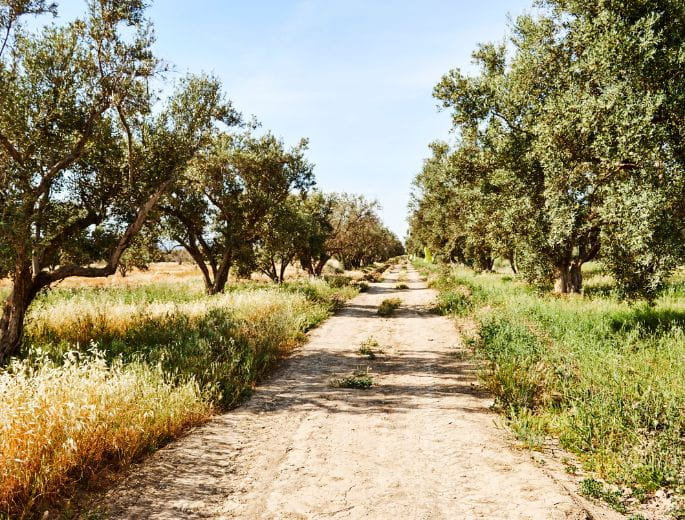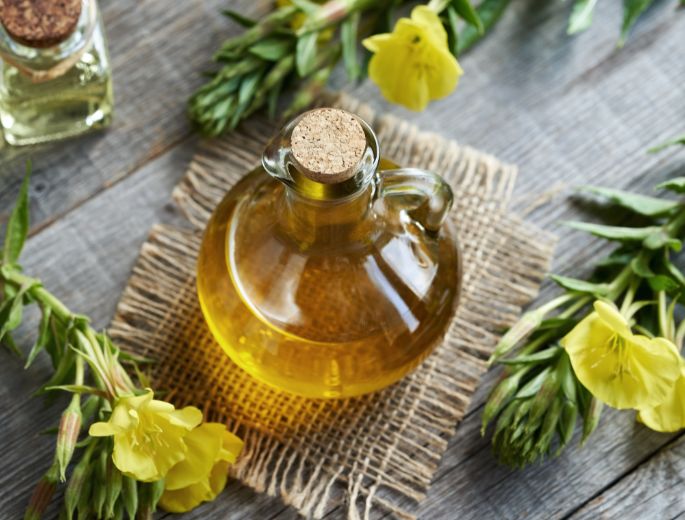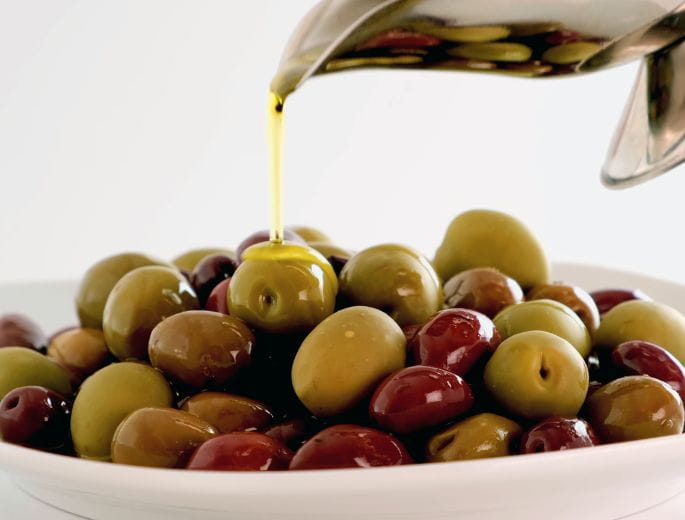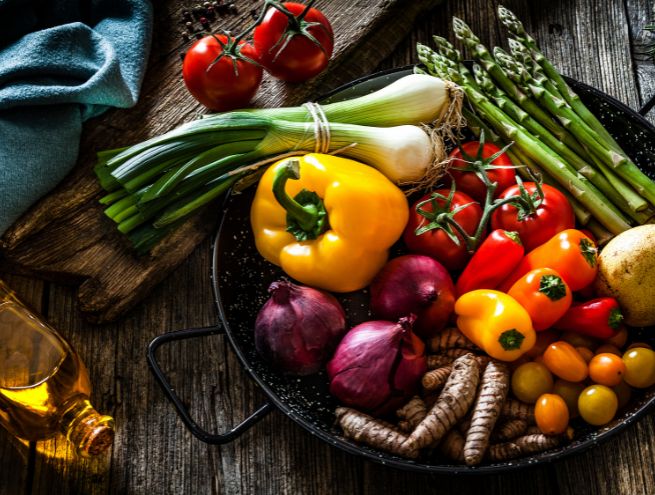Oil, olives and all their co-products are an integral part of people's eating habits.
2023, an inflationary year for Ukrainian sunflower oil, is the right time to redevelop local production of this ancestral oil.

Algeria, the other olive country
A traditionally agricultural country, Algeria enjoys a Mediterranean climate conducive to the production of high-quality oil. It ranks among the world's top ten olive oil producers, behind Spain, Italy, Tunisia, Morocco, Greece, Turkey and Syria, but is absent from the top 10 exporters.
The European Union accounts for almost half of the world's olive orchard (49%), with Spain the leading producer with 25%.
Agricultural structure
In 2022, the Algerian olive-growing area will exceed 440,000 ha, representing an estimated 34% increase between 2012 and 2022.
The average farm covers 2.81 hectares, with 230 trees producing 221 quintals of fruit.
Of the 6 million olive trees in the Algerian orchard, over 5 million are in production, with a yield of 23 kg per tree. An expansion program is currently underway. It includes the creation of intensive olive groves and an increase in irrigated area. This project will almost double the size of the orchard, reaching 900,000 hectares under cultivation in Algeria by 2024.
Historically, olive growing has been highly concentrated in Kabylia and the north of the country. However, the project plans to extend this cultivation to other Algerian regions.
Algeria's food self-sufficiency policies are taking advantage of the opportunity to grow olive trees.
Key figures of the olive oil sector
Global markets
By 2021-2022, world consumption of olive oil is set to reach 3.23 million tonnes (COI). It has almost doubled since 1990/1991. But this represents only 2% of global vegetable oil consumption!
Europe is the biggest consumer, but its share is tending to fall, from 54% in 2017 to 48% today.
Share of main vegetable oils in global consumption:
- Soybean oil: 29
- Palm oil: 35
- Rapeseed oil: 14
- Sunflower oil: 9%.
- Palm walnut oil: 4%.
- Peanut oil: 3%.
- Coconut oil: 2%.
- Cottonseed oil: 2%
- Olive oil: 2%.
Source : USD
Algerian excellence
Although Algeria is the world's 8th largest olive oil producer, 99% of its production is destined for domestic consumption. Consumption is 6l/capita/year, and varies from region to region (in Kabylie: 11l/ha/year).*

The famous cru de Tablazt in the Haute Soummam region, which won a medal at the 1910 Brussels World's Fair, the bitter Kabylie olive oils from the forest edges of the Bibans, the jade-green oils from the Illoula foothills, the heavy olive oils from Haute Kabylie with their fleeting aromas of pine and oak, the orange-pink oils from Seddouk, the golden-brown oils from the Babors coastline.
Long considered the best, olive oil from the orchards of Kabylie seems to be being dethroned by that of Jijel, with the Nutris company and its new olive oil factory, and even that of Sig with its specific variety, the sigoise, processed for decades by companies such as Sarl BHS - les Ravissantes.
A study** carried out by the consultancy firm PWC and Immar-Maghreb for PASA (Pôle Soummam en Algérie - 2022) reveals that:
- 99% of those surveyed also consume other vegetable oils (rapeseed, soya, etc.).
- 41% of Algerians consume olive oil
- 66% for its health benefits
- 38% for taste
- 35 % out of habit
- 28 % for beauty reasons
The price reaches 705 DA/l in Kabylie, but 813 DA/l in other regions of Algeria.
- 74% of customers buy olive oil through parallel channels
- 37% self-consumption
- 23% by donation (solidarity economy)
The production margin is reduced to 40%.
- 86% of customers believe that the oil they consume is of good quality, taste and smell.
However, 90% of the diaspora would like glass packaging, even if it means paying a little more, while Algerian consumers feel that the price is already too high and should be lowered.
The secret: quality olive oil
To stand out from the competition, you need to produce top-quality oil, free from defects. Algerian producers have understood this. They have banished ancestral methods to improve productivity, hygiene and quality.
Chemical composition, degree of acidity, taste, color. All these criteria can be used to determine exactly what makes a good olive oil. But for Algerian consumers, the country produces some of the best olive oil in the world.
Several Algerian brands have won international awards:
- The Baghlia brand won its 3rd gold medal at the 8th Athenaiooc in Greece.
Hamid Kiared, the brand's owner, states on his Facebook page that "this international recognition testifies to [their] commitment to producing an olive oil of excellence, preserving quality and flavors". In 2017, the company exported 15,000 liters of olive oil to Europe2.

Organic olive oil won a gold medal at the 2023 International Organic Olive Oil Competition in Geneva, Switzerland. This latest accolade comes on top of all the medals it has won in recent years in Tokyo (Japan), Berlin (Germany), Italy, Oslo (Norway) and twice in Dubai.
The Dahbia brand targets the organic market, with olives harvested in the morning and crushed in the afternoon.
A study** carried out by the consultancy firm PWC and Immar-Maghreb shows that opinions on labeling differ between the diaspora and nationals:
- 69% opted to indicate the region where the fruit was harvested, while others (64%) chose the region of production or quality.
- Among residents surveyed, 57% are content to use a label indicating quality and region of crushing.
Algerian olive oil exports are booming. According to data from the Ministry of Trade, in 2021 these exports involved 600,000 liters mobilized by 78 operators to 19 countries, representing a value of US$2 million. By 2024, the target is US$5 million.

Algeria has made infidelities to its traditional olive oil, replacing it with sunflower oil. Sunflower oil contains Omega 6, but Algerians already consume enough of it. On the other hand, it does not provide Omega 3. It is rich in vitamin E, which contributes to tissue protection.
As nutrition is a question of balance, it's a good idea to consume one or the other in turn.
Prospective
The Algerian olive orchard is progressing with greater technical agronomy: irrigation, organization, tree health. What remains to be done is to process co-products, as suggested in Mr. BOUSSAA's conference at the Agora des Experts, which recommends upcycling olive-growing by-products.
All products and co-products could be recycled, to the great benefit of the environment, which today suffers from major pollution due to effluents.
Sources:
1Olive cultivation is concentrated at 98% in the Mediterranean basin.
2TSA August 2023
*Source: El-Watan – 03/04/2022
**The targeted sample includes 1,737 consumers representing 10 major cities, including 3 wilayas of Kabylie, 5 major urban areas, the High Plateaus, and the Algerian South, with 317 residing abroad and distributed across three countries in Europe (78%), the United States (10%), and Canada (12%). In terms of production, the operation targeted 160 olive oil producers, including 70 with modern oil mills, 29 with semi-modern oil mills, and 51 with traditional oil mills.

